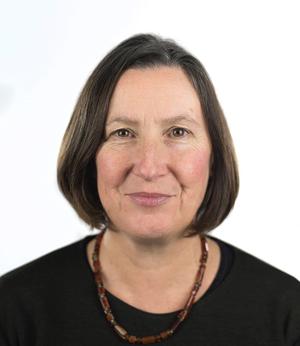Head of Discipline (Theatre and Performance) Dr Jane Woollard has shed a new light on the ground-breaking acting career of Eliza Winstanley — a superstar of Sydney’s theatre scene in the 1830s and 40s — though her research and creative practice.

Dr Jane Woollard
“Eliza Winstanley was a little like the Cate Blanchett of the Sydney stage in the 1830s and 40s. She also toured Tasmania, performing in Hobart and Launceston theatres. Through my research I've pieced together more detail about her performances and how audiences of the day received her work.”
A unique presence
Jane used sources like colonial newspapers to form her conclusions about Eliza Winstanley's performance style and personality.
"The critics described the performances of leading actors in detail, so a significant part of my work has been a close reading of colonial theatre reviews, newspaper announcements, as well as resources on AusStage, to create a fuller picture of Winstanley's life and career. "
A vivid picture emerges.
Elizabeth Winstanley was a very lively and physical performer, who was emotionally connected to her roles. She enjoyed playing male roles and often engage in sword-fighting and other forms of combat on stage.
Jane recalls the story of a 1836 production at Sydney's Theatre Royal where Winstanley's colleague, Mr Lane, was delivering a lacklustre performance. During her scene with Lane, Winstanley delivered a vigorous "box on the ear" when the onstage action required her to slap Mr Lane. The critic noted that despite this unladylike action, the stage slap did not rouse Mr Lane from his usual "lame and tame" performance.
A pioneering performer
Eliza Winstanley is widely considered the first female Australian actor to achieve international success and recognition.
“Many significant female performers of the 19th century are overlooked in theatre history. At the time female actors were considered less worthy than their male cohorts — in the public imagination they were akin to sex workers because of the ‘exposed’ nature of their profession — and finding records of their lives can be challenging.”
As the first woman in Australia to play Shakespeare’s Richard III, Eliza Winstanley toured the country widely, including performances in Tasmania at Launceston’s Royal Olympic Theatre and Hobart’s Theatre Royal. She then went on to play Shakespearean roles internationally, finding success in major theatres of London, New York City and Philadelphia.
Finding inspiration in the past
Dr Woollard has adapted her research to write and direct a stage production called Miss W Treads about the life of Eliza Winstanley. Performed at La Mama in Melbourne last year, the performers were coached in 19th century popular song, dance, and accents – all skills colonial actors had to incorporate into their work.
It is very rewarding to investigate the careers of prolific female performers sin the early Australian theatre. How did they make their living when they weren’t performing? How did they look, move and sound on stage? These questions are unanswerable, however they inspire my exploration of these important founders of theatre craft in Australia.
Jane's doctoral research, which was conducted at LaTrobe University, has also informed her approach to teaching Theatre and Performance at the University of Tasmania.
The repertoire and acting methodologies she investigates are from the period where melodrama was the dominant popular theatrical mode, before the influence of Konstantin Stanislavski and his focus on psychological truth through naturalism.
"I'm investigating what's useful and transformative about melodrama for students – what can we learn from the craft of acting as practiced in the 1830s and 40s?"
Melodrama is often spoken of in pejorative terms by modern theatre makers and critics.
"By turning our gaze to earlier theatrical traditions we can discover useful embodied methods to incorporate into contemporary performance practice."
Read Jane's article ‘The Elasticity of Her Spirits’: Actresses and Resilience on the Nineteenth-Century Colonial Stage.
And you can meet her and theatre lecturer Dr Asher Warren at Open Day in Hobart on 5 August and in Launceston on 12 August. Register now and create your personalised schedule for the day.
Inspired by this research? Consider a Theatre and Performance Major as part of the Bachelor of Arts.
Hero image: scene from Ms W Treads (2017), photograph by Sarah Walker